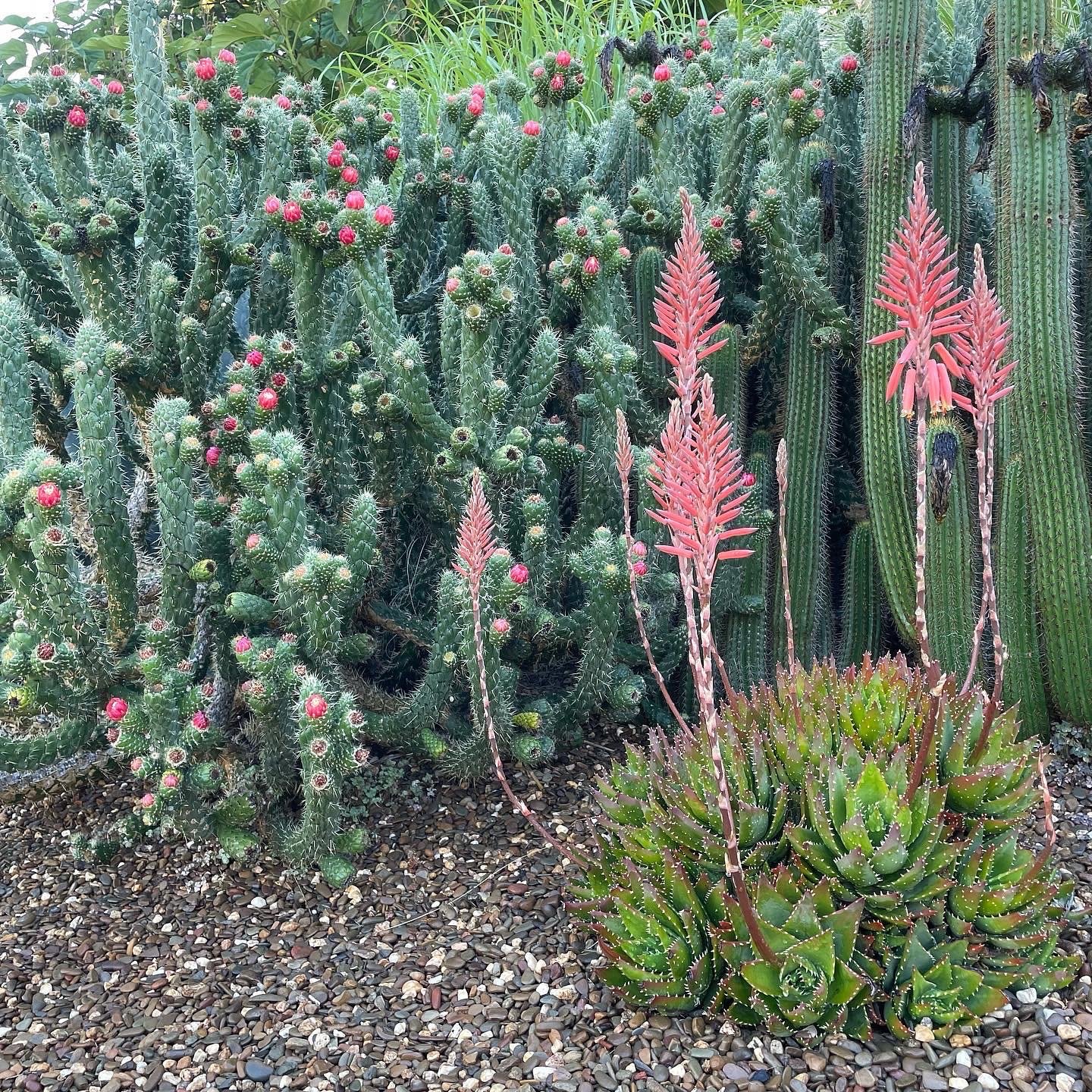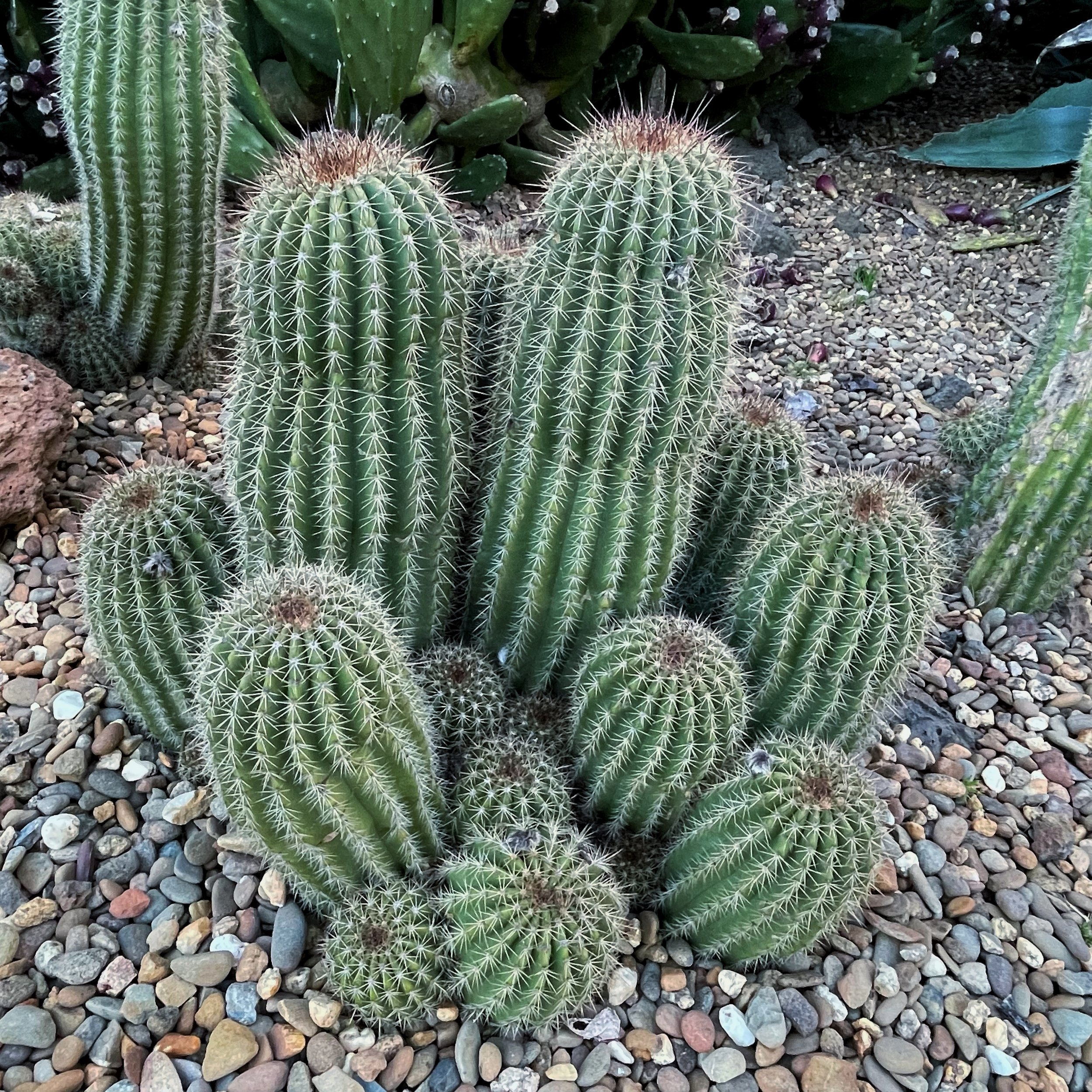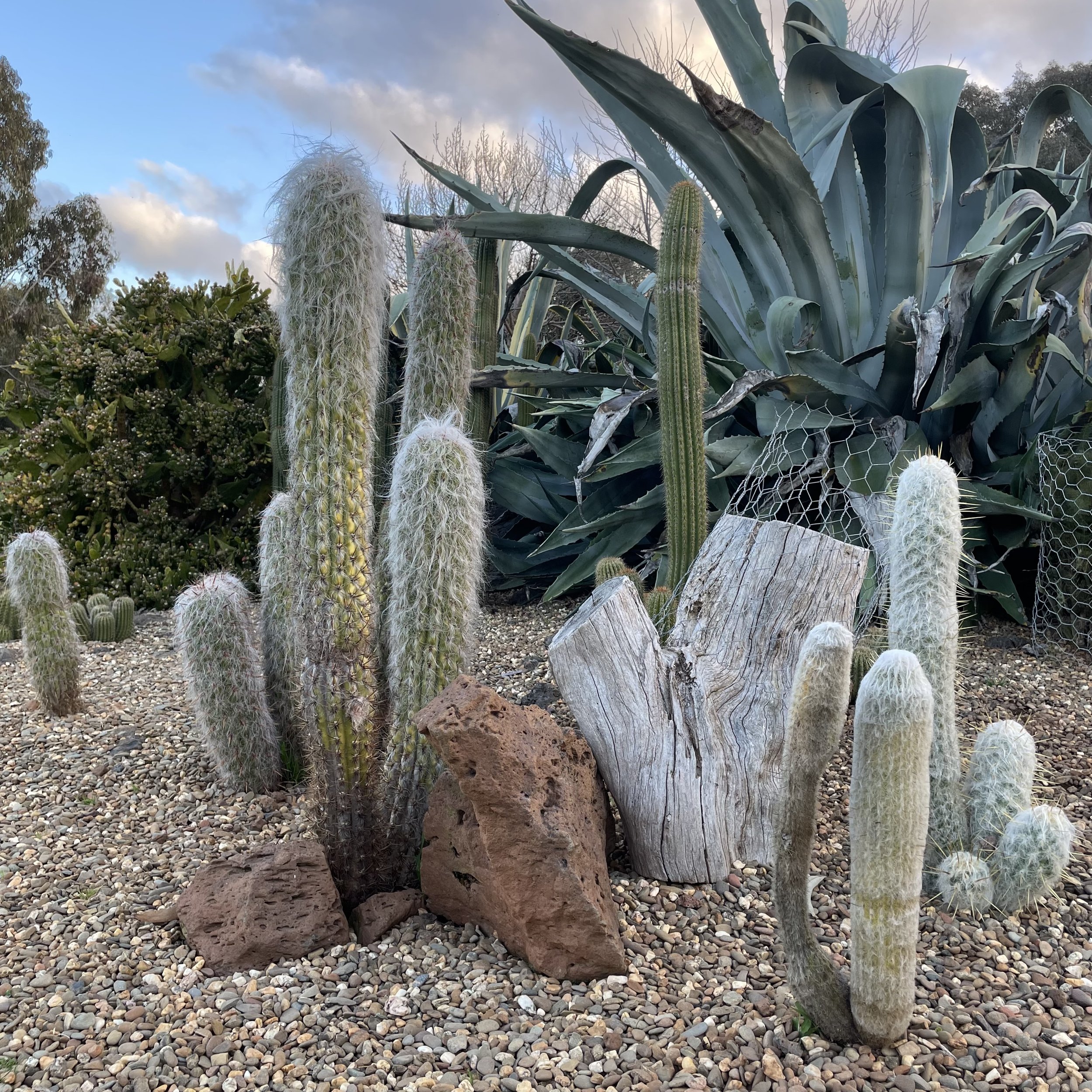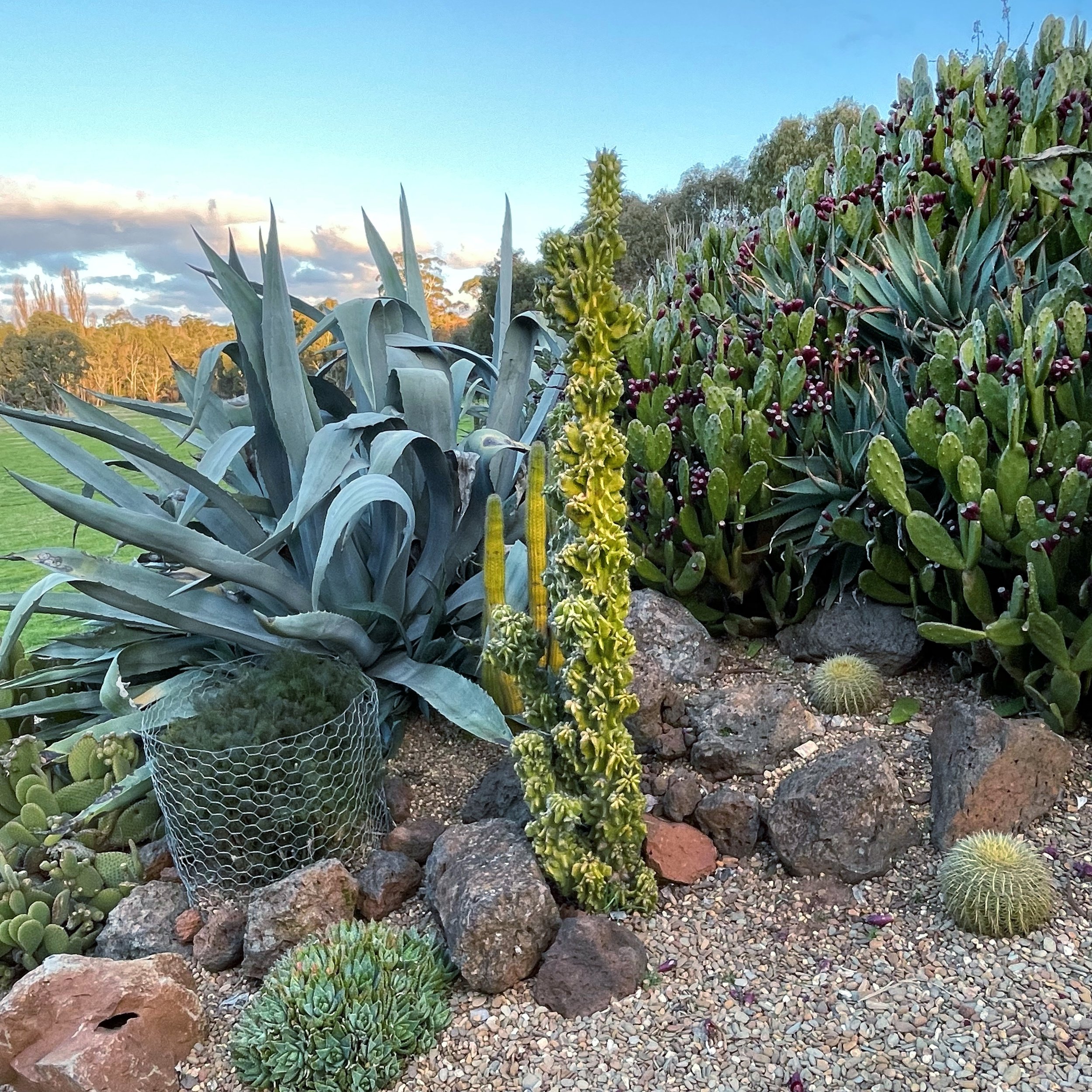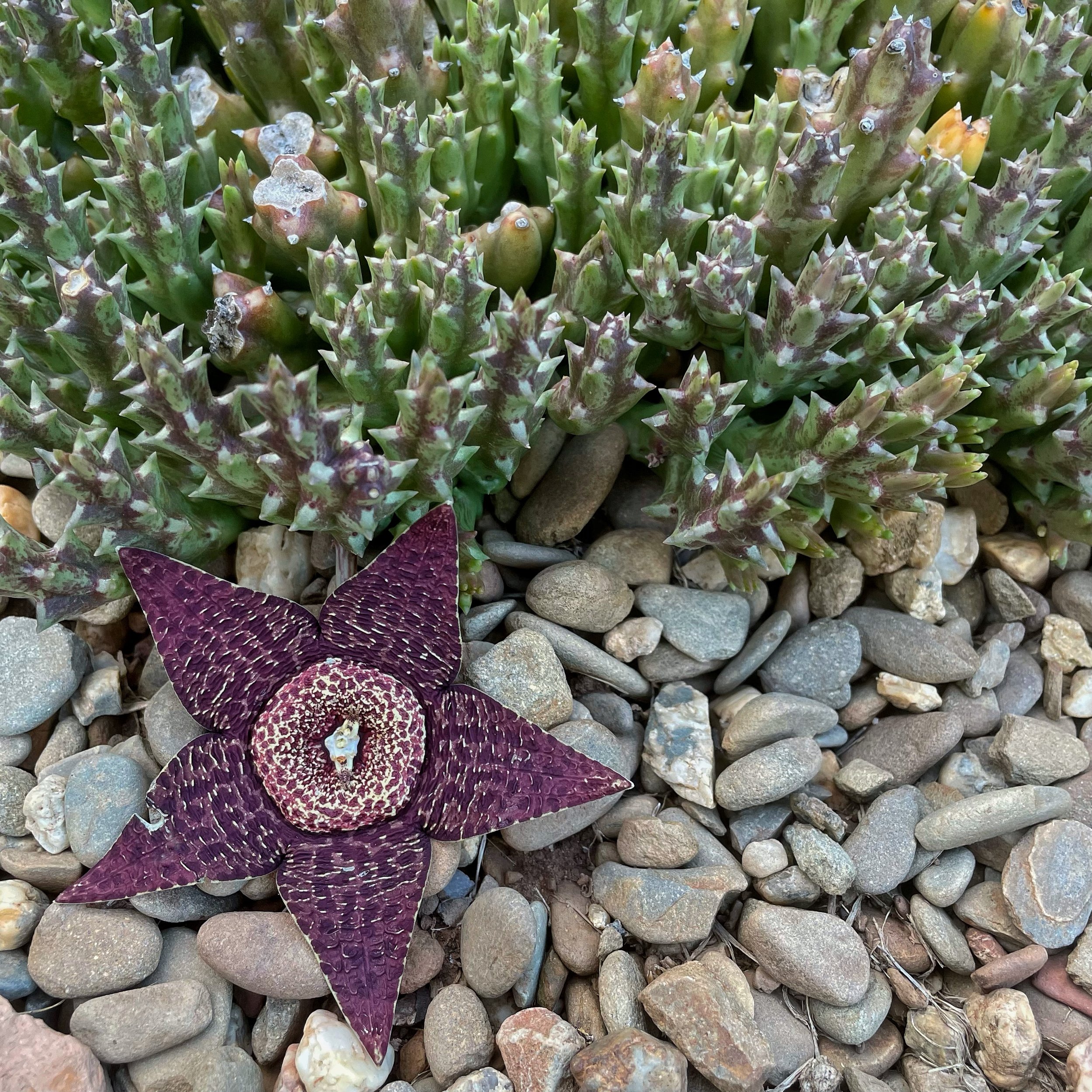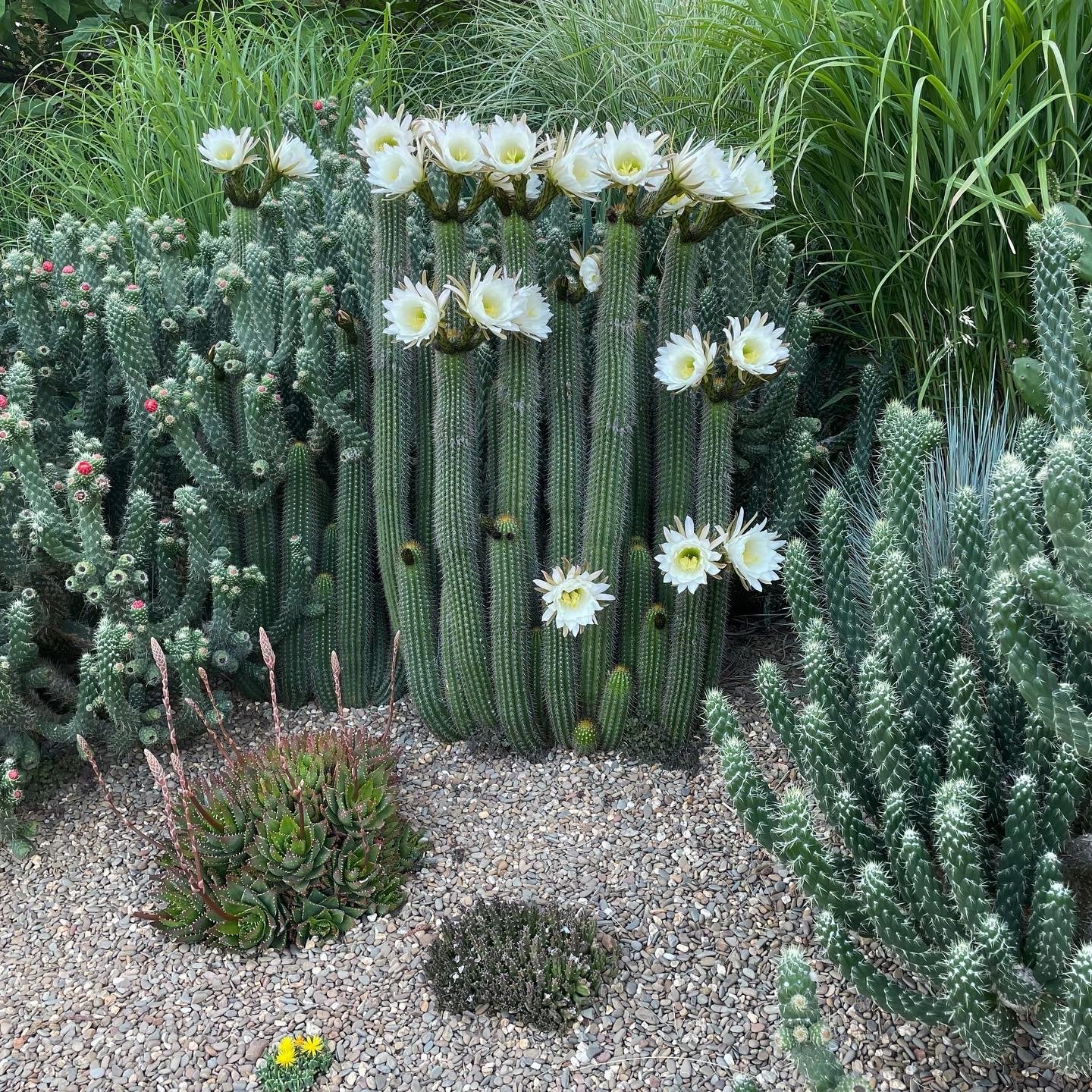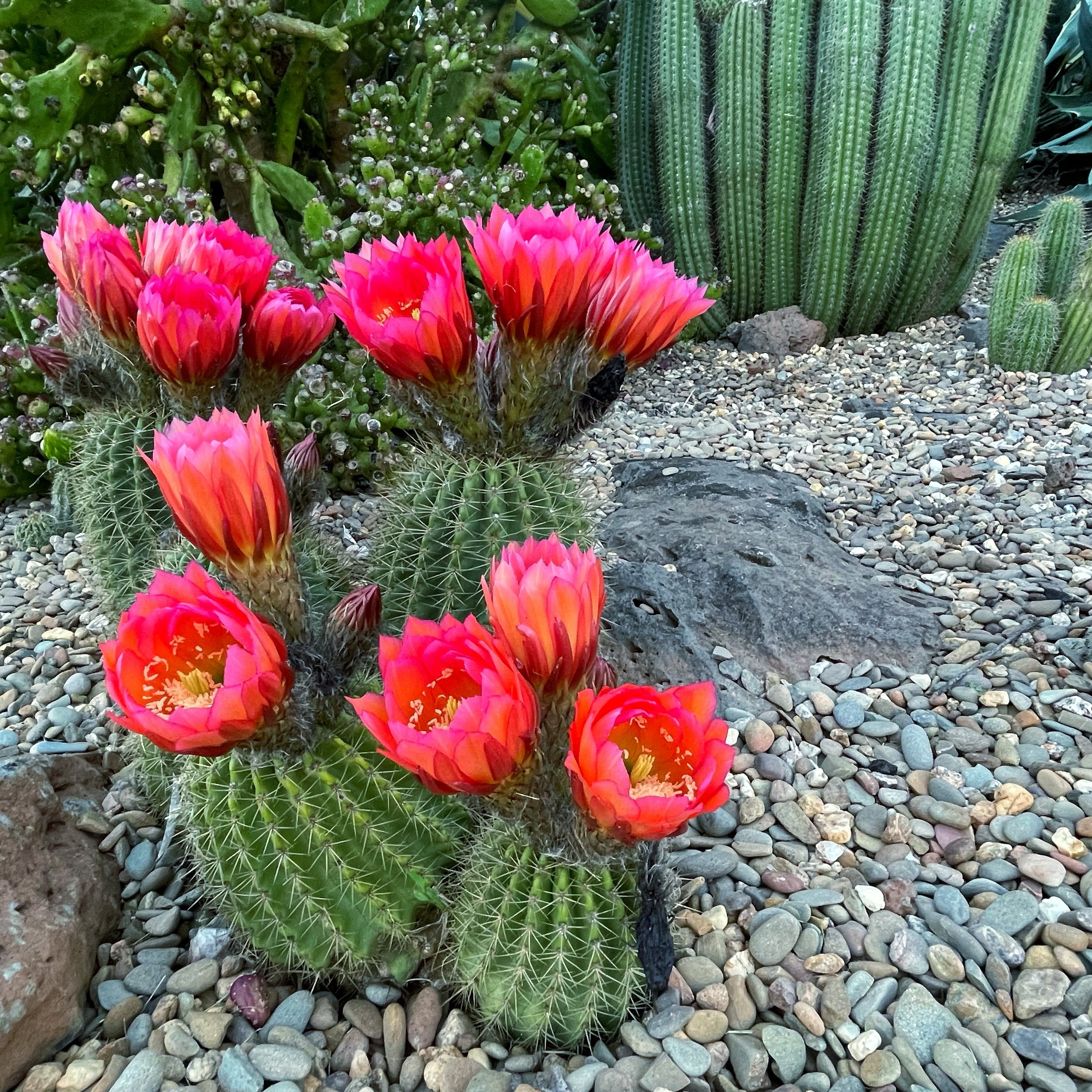ENTER THE CACTI KINGDOM
When compiling last month’s feature on the fabulous, resilient planting of The Stones in Central Victoria, Australia, I felt swept up in the calm colour palette vs the outstanding shapes and texture in this garden.
I hadn’t any real understanding of the resilience of cacti or succulent varieties or any appreciation of how they could complement softer planting around them.
Read on for a closer examination of how Jeremy Valentine and Grant Francis have utulised these architectural beauties - their experimentation, learning, and valuable varieties that have coped with the climatic extremes.
Julia x
@thestonescentralvictoria
Words and images by Jeremy Valentine
Agave americana (blue and variegated), Echinopsis spachiana (golden torch), Cephalocerous senilis (old man cactus) with a random but complementary self-seed bronze fennel!
In the background, softness arrives with Miscanthus sinensis and variegatus.
Eight years ago when we wondered what to do with a rubbly rocky slope infested with weeds, we came up with the idea of creating a cactus garden. Partly it was to satisfy a lifelong fascination with cacti and succulents, and partly to create something exciting beyond the boundaries of irrigation in our difficult climate here at The Stones.- (follow link for further information about this environment).
This uncharted part of the property needed ‘oomph’ and something we could really anchor the rest of the garden around, which back then, was just outhouses and paddock grounds.
After clearing by hand the dogged swathes of marshmallow and capeweed, we unearthed undulating sheets of basalt and iceberg rocks, a hundred times bigger than what appeared on top! It was rough inhospitable ground but we found ourselves presented with a huge opportunity.
Plantings of Miscanthus sinensis and variegatus form the backdrop to Furcraea foetida, Agave americana and Opuntia cylindrica, with trailing common Carpobrotus (pigface).
Opuntia cylindrica and Aloe brevifolia (short-leaf aloe).
I was excited that it was difficult, and a little world of equally inhospitable plants seemed to be the perfect choice. Visions of cactus-ie-abandon conjured up a bounty of endless plant choices (in my mind at least).
But how wrong we were to assume that we had carte blanche to plant whatever took our fancy. The enormous cuttings of Aloe ferox we had carted back from a garden in Geelong all suffered terribly that first winter.
They thrived at first when the weather was hot, but melted and liquified over the cold months on this undulating bank to the frigid river flats below. Fog as cold as Everest gathers in pools down there! And I’d completely misjudged our choices, concentrating only on the heat and drought conditions of summer - little did I know that winter here would be the most brutal test of anything in the cactus and succulent world.
Opuntia cylindrica, Echinopsis spachiana, Agave americana with Miscanthus sinensis and variegatus.
However, in those early days of experimentation, some things thrived and dealt with every climatic situation that came their way.
The opuntia (prickly pear) grew unflinchingly, and the Agave americana which makes up the framework of this part of the garden, were (apart from a few frost-bitten leaves) happy in this spot all year round.
Over time we experimented with different varieties with varying degrees of success. We lost a lot but gradually worked out our little plant palette of things that worked.
Our previous lives as textile designers, creating prints for bedding and fashion fabrics, unwittingly trained us very well in working with limited plant selections. In our work, we were forced to create magic in our designs with a maximum of eight colours only. We found it was no different in the garden - where working within the limitations of having only a few stalwart species to work with was a matter of necessity. This had the fringe benefit of keeping things looking smart and stylish.
Repetition is key when you don’t have a lot to work with, and there’s the lovely advantage of it looking wonderfully restful on the eye and creating a sense of distance and scope.
Above and below: Cephalocereus senilis (old man cactus)
“They are the plants of dreams, instantly recognisable and yet alien all the same. Untouchable, but wonderfully alluring to the eye. Turning terra-firma into under-the-sea reefscapes perhaps, or exotic fantasies from the centre of the earth. ”
Centre of image: Cereus peruvianus monstrose with Echinocactus grusonii (golden barel cactus) dotted on the right.
In recent years, we found a few more examples to incorporate, including some advanced Cephalocereus senilis (old man cactus) which we salvaged from a cactus garden in Bendigo that had been purchased by a cactus hater!
We also introduced wonderfully knobbly Cereus peruvianus monstrose which looks like a green tower of dribbled sand. These were replanted making sure to orientate them in exactly the same way so as not to discombobulate their natural compass to the rising and setting of the sun.
Other recent additions are a gifted Rhombophyllum dolabriforme (elkhorn plant), which was hidden behind the creamery at our Open Garden. This now lives under a wire cage to protect its delicious leaves from the rabbits, and has studs of yellow sunburst flowers which open and close with the light.
Rhombophyllum dolabriforme (elkhorn plant)
We also have stapelia, whose sophisticated flowers (which smell like rotting meat), is thriving in a sheltered nook beneath the towering Echinopsis spachiana (golden torch). The golden torch is an extremely hardy variety with extraordinary white lily-like flowers that are insatiable to the bees.
Cuttings can be successfully laid horizontally under the ground with notches cut along the column to result in a line of multiple new plants. We use this a lot to create wonderful verticals within the plantings.
All these things have proved to withstand our frosts of down to -7C.
We do allow ourselves one less hardy indulgence, chosen for their wonderful spherical forms, that being the great spheres of the Echinocactus grusonii (golden barel cactus) which look so appealing below their battalion border of agave. It’s not uncommon for me to wrap them in bubble wrap on particularly cold nights (hardy only to -3 C), but the molly-coddling is worth the effort - something I don’t entertain with other things in the garden.
1Echinopsis spachiana (golden torch) with Aloe brevifolia (in flower) and Stapelia orbea variegata
Echinopsis huascha (red torch cactus)
Echinopsis spachiana and Opuntia cylindrica back planted with the blue leaves of the Furcraea foetida. There’s a common Opuntia (prickly pear) in the middle.
The tops of Lomandra ‘Lime Tuff’, and touches of Helictotrichon sempervirens (blue oat grass) are in between.
Cacti are not for everyone, and it’s a perilous task to manage such great spikey forms. I don myself in thick welding gloves, long sleeves and goggles for protection. And a saw, chopping blade and BBQ tongs for operating on unruly agave leaves and wayward cactus columns. But it’s a biannual task which is well worth the effort. And they are happily left alone for the other 363 days of the year.
For the cactus haters out there, clutching onto their safety net of conservative, soft-petalled garden pretties, I urge you to look a little closer. For who can dismiss the incredible architecture of agave leaves, or the intricate multi-angled paddles of an opuntia in the slant of the evening sun?
They are the plants of dreams, instantly recognisable and yet alien all the same. Untouchable, but wonderfully alluring to the eye. Turning terra-firma into under-the-sea reefscapes perhaps, or exotic fantasies from the centre of the earth.
Provided links to plants are chosen by Julia with no bias - simply to connect with the best imagery and information to aid the reader on that plant.
No affiliate or sponsored links are included - please beware they may contain some seasonal information from other countries that differ from the one you are in!


